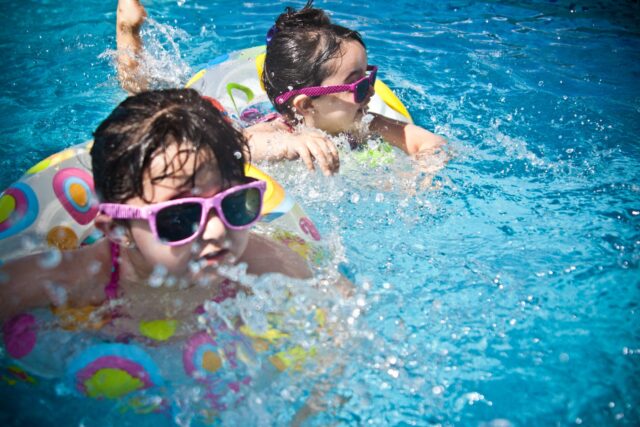“Fun in the sun” is the name of the game at many camps. But being out in the sun means everyone’s skin needs protection from UV rays, regardless of age or skin color.
The American Academy of Dermatology says that skin cancer rates have been rising for years, and that likely won’t change any time soon. Implementing strong sun safety practices at your camp is one step you can take to start reducing those rates.
In this article, we’ll go over the basics of sun safety and how you can apply those principles at your camp.
Basic sun and UV safety
Even if you’ve been practicing sun safety yourself for years, guidelines are always being updated. Keep up with the latest research to understand how to protect yourself, campers, and staff.
Understanding the vocab
Sun care has some unique jargon. Below are the four main acronyms you should know before getting started.
- UV: This stands for ultraviolet radiation. It comes from the sun and can cause skin damage. There are multiple types of UV radiation.
- UVA: This type of UV sun ray makes up 95 percent of the UV rays that make it to the surface of the Earth. UVA rays can cause aging and penetrate deeply into the skin.
- UVB: UVB rays are the main culprits of sunburn. Exposure has also been linked to DNA mutations that can cause various types of skin cancers.
- SPF: This stands for sun protection factor. You will see this rating on sunscreens, and it relates to the amount of protection from UV rays it provides.
Know your timing
Not all sunlight is the same. The strength of UV rays varies according to the weather and the time of day. For example, one hour in the sun at 9:00 a.m. and fifteen minutes in the sun at 1:00 p.m. can have the same amount of solar energy.
Fortunately, many smartphone weather apps and weather websites now include a section on the UV index, which shows you how strong the UV rays are in your area. Check this before outdoor activities and remember that rays are usually strongest between 10 a.m and 4 p.m.
All about sunscreen
As stated in the vocab list, SPF stands for sun protection factor. But what do those numbers really mean?
The number on the sunscreen bottle “tells you how long the sun’s UV radiation would take to redden your skin when using the product exactly as directed versus the amount of time without any sunscreen.” In practical terms, this means it would take 30 times longer for you to burn if you were wearing 30 SPF compared to no sunscreen at all.
Higher SPF sunscreens usually provide better protection. At minimum, you should be using 30 SPF. For those with extra-sensitive skin or a history of skin damage, go with 50 SPF or higher.
Additionally, you should be applying more sunscreen than you think. It’s recommended that you put on one ounce (the size of a shot glass) to your body and a nickel-sized amount to your face. Reapply this amount every two hours.
Implementing sun and UV safety practices at camp
Now that you know the basics, here are a few ways to apply these principles at your camp.
Ask parents about risk levels
On your intake forms, include a section on sun safety. You will want to know if a camper is more sensitive to UV damage than other kids.
When you know who is most at risk, camp staff can keep a closer watch on those kids to prevent burns. While everyone will need sunscreen, some campers may need to reapply more often than others or use a higher SPF.
You can also ask about any sunscreen allergies or sensitivities, just to make sure you stock up on sunscreen that works for everyone.
Keep a large supply of SPF
Speaking of stocking up, it’s important that your camp has its own supply of SPF. Even if you ask parents to send their kids with the sunscreen of their choice, have your own just in case.
This way, if a kid forgets their own, you’ll still have them covered. It also ensures that the kids who hate sunscreen and leave it behind on purpose don’t have an excuse!
Set regular application times
Campers should be reapplying sunscreen at least every two hours. To make it easier for staff to remember this, include 15-minute sunscreen reapplication times on your schedules.
It may seem like overkill, but preventing sun damage is incredibly important. Also, you can try to save your outdoor activities for times where UV rays are weaker.
About CampSite
CampSite’s comprehensive camp management software is relied on by camps of all kinds across the country. Our customizable platform, frequent product updates, and 5-star support team make us a trusted and necessary camp management tool.
Want to see what we’re all about?
Request a free personalized demo with one of our sales experts!
